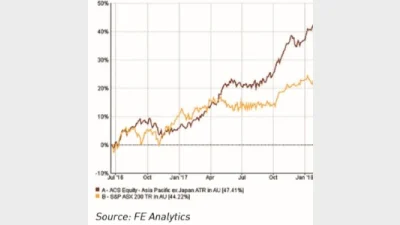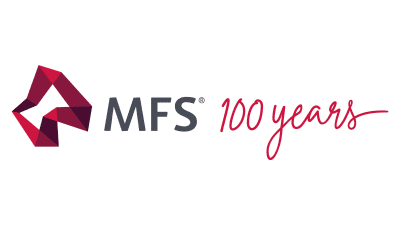India standing tall amongst APAC equities



A large population, innovative technology companies and rising GDP are just some of the reasons investors are eschewing traditional developed markets in favour of fast-growing emerging ones.
Rather than investing in Europe or the US, investors are searching for opportunities in Asia Pacific ex Japan funds which invest in countries such as India, China and Taiwan. Japan is excluded as it is classified as a developed rather than emerging country.
According to FE Analytics, there are currently 34 funds in the ACS Asia Pacific ex Japan sector plus a further 20 in the ACS Asia Pacific Single Country sector for those who seek more specific exposure. In comparison, there are more than 300 funds which invest in Australian equities.
“There have been a few companies looking at Asia but there are far fewer options for the Australian retail investor if they want to invest in Asia. We are still a way off yet from seeing lots of funds launching in this space,” said John O’Keeffe, head of boutique strategy at Fidante.
Many of these funds are small in size, with only nine funds out of 54 holding more than $100 million in assets under management and only three, the Platinum Asia, Platinum Japan funds and BlackRock iShares Asia 50 ETF, holding more than $300 million.
Somewhat confusingly, some funds in this sector invest heavily in Australia and New Zealand rather than continental Asia so it is important to check where the fund is seeking its exposure. This includes the $221 million Lakehouse Small Companies fund and the $95 million Ellerston Australian MicroCap fund.
Investment director of the Fidelity China fund, Catherine Yeung, said: “Asia Pacific is not a homogenous block, there are many different markets which are all at different stages of the cycle.”
The aforementioned Lakehouse fund, which invests in Australian and New Zealand small-cap companies, is the best fund in the sector with returns of 26.5 per cent over one year to 31 May 2019. At the other end of the spectrum, the Optimal Japan and Asia Trust fund has lost 11.7 per cent over the same period.
Across the whole sector, the ACS Asia Pacific ex Japan sector has lost 0.4 per cent over the same period while the ACS Asia Pacific Single Country sector has lost 2.6 per cent. However, when you go back to the previous year, the sectors had annual returns of 15.3 per cent and 11.1 per cent respectively.
Given this volatility investors are urged to consider emerging markets and Asia for the long term, at least a 10-year period, rather than for a short term boost. These type of markets tend to be less transparent, corporate governance is hard to define, it can be hard for foreign investors to access, and there can be a lack of liquidity.
Yeung said: “You have to be prepared to do more due diligence and cross check the information, the Indian and Chinese domestic markets have huge depth but you need the manpower.
“I would say to take a broad-based exposure, don’t focus on one particular sector and don’t try to time the market. There are lots of opportunities but also lots of risk.”
India
Half of the top 10 best-performing funds over the year to 31 May are invested in India including the Ellerston India fund with returns of 18.7 per cent, Jaipur India Growth with returns of 17.2 per cent and returns of 10.6 per cent for the India Avenue Equity Wholesale fund.
The reason India has been doing so well recently is the re-election of Prime Minister Narendra Modi earlier this year. Critics praised the continuation of the Modi leadership who has pushed through reforms such as demonetisation and the Goods and Services Tax. Going into his second term, bold reforms are anticipated and a focus on overseas market should stimulate employment growth.
Yeung suggested India could be a potential beneficiary if companies moved their manufacturing away from China in light of the ongoing trade war between the US and China.
“If Modi can get his reforms through then India could benefit and absorb that manufacturing demand. The key for Modi is job creation but they need to improve the infrastructure first,” she said.
“India has a great long-term story but it is also one of the most expensive countries in the region.”
Kris Walesby, managing director at ETF Securities, which last month launched an ETF tracking Indian equities, said: “India is very interesting as its growth rates and the foundations underpinning this growth are arguably more robust than China’s. India is a domestic consumption-driven economy with nearly 60 per cent of India’s GDP driven by domestic private consumption.
“The government has made an active effort in recent years and will continue to campaign for investment and trade co-operation.”
Recommended for you
In the latest edition of Ahead of the Curve in partnership with MFS Investment Management, senior managing director Benoit Anne explores the benefits of adding global bonds to a portfolio.
While M&A has ramped up nationwide, three advice heads have explored Western Australia’s emergence as a region of interest among medium-sized firms vying for growth opportunities in an increasingly competitive market.
Private wealth firm Escala Partners is seeking to become a leading player in the Australian advice landscape, helped by backing from US player Focus Financial.
In this new series in partnership with MFS Investment Management, delve into all things fixed income and discover how you can use the asset class to build better client portfolios. In this Q&A discussion, MFS managing director- head of wholesale distribution James Langlands sits down with Evidentia senior asset consultant Ron Mehmet to discuss fund selection.










